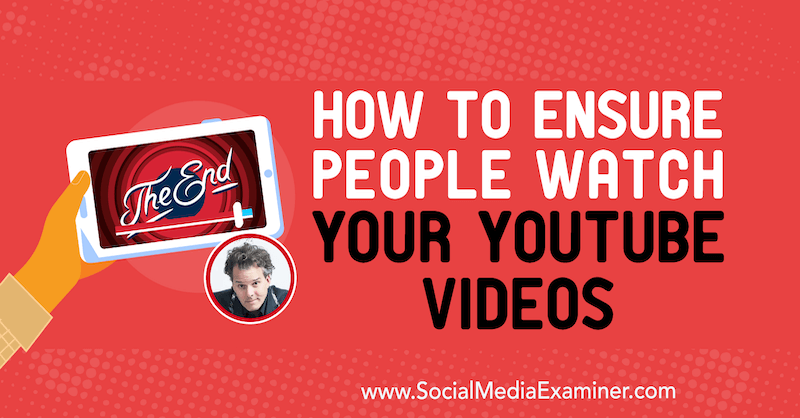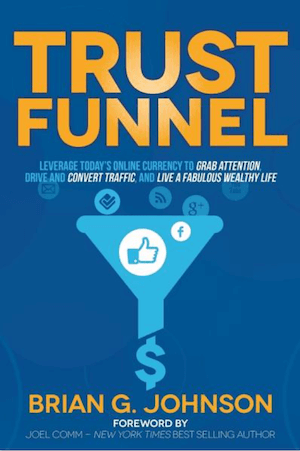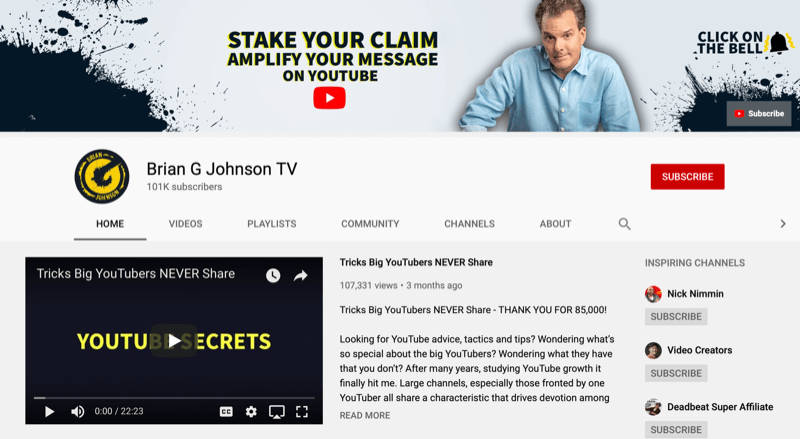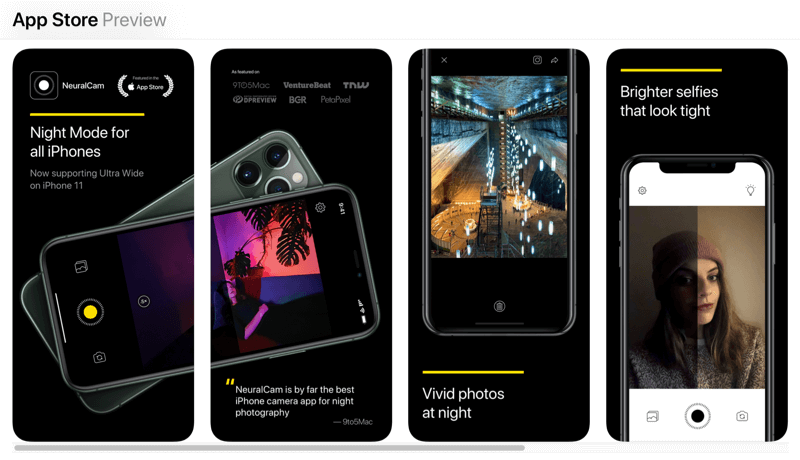Do you want more video views on YouTube? Wondering how to keep people watching your videos to the end?
To explore how to ensure people watch your YouTube videos, I interview Brian G. Johnson on the Social Media Marketing Podcast.
Brian is a YouTube expert who helps people amplify their message with the power of YouTube. He's the author of Trust Funnel and Tube Ritual. His course is called Tube Rank Ritual.
Brian explains why YouTube cares so much about retention time. He also shares tips to get people to watch your YouTube videos to the end.
Listen to the Podcast Now
This article is sourced from the Social Media Marketing Podcast, a top marketing podcast. Listen or subscribe below.
Where to subscribe: Apple Podcasts | Spotify | YouTube Music | YouTube | Amazon Music | RSS

Ensuring People Watch Your YouTube Videos
Brian recalls being a child in school and hearing about all of the things he could do for a living when he grew up: doctor, attorney, carpenter—all working for someone else.
When Brian first heard about working for yourself, it sounded almost like a game, where you get to set your own rules and boundaries. He soon got started in network marketing. When the internet came along, Brian had a feeling it was going to be a big deal.
Brian started building websites, then driving traffic, which led to SEO, which led to affiliate marketing—which led to making enough money to quit his job as a chef.
 In 2015, he wrote a book called Trust Funnel. The book, which features a forward by Joel Comm, did really well, largely due to a well-executed launch strategy. Brian spent about 9 months writing the book and then he spent roughly the same amount of time on the book launch. Of course the book launch did well, he says; nobody else was spending that much time on their launches.
In 2015, he wrote a book called Trust Funnel. The book, which features a forward by Joel Comm, did really well, largely due to a well-executed launch strategy. Brian spent about 9 months writing the book and then he spent roughly the same amount of time on the book launch. Of course the book launch did well, he says; nobody else was spending that much time on their launches.
Brian took about a month off after the book launch to consider his next steps. There was no rush; money was flowing, he had coaching clients, and everything was working out. Then he started noticing people saying, “Hey, you're heavy on video. I love what you do on video. Your book was good but you've got something that you could really harness with video.”
That led to Brian jumping onto YouTube in March 2016.
Brian was able to leverage the SEO and Google optimization experience he had gained from his website work to jumpstart his YouTube channel and get good results quickly—although, he points out, they weren't exceptional results at first. He had to practice, study, and most of all, really self-examine and learn how to be simultaneously objective and subjective (two words Brian loves). He says this is both very difficult and very important.
Get World-Class Marketing Training — All Year Long!
Are you facing doubt, uncertainty, or overwhelm? The Social Media Marketing Society can help.
Each month, you’ll receive training from trusted marketing experts, covering everything from AI to organic social marketing. When you join, you’ll also get immediate access to:
- A library of 100+ marketing trainings
- A community of like-minded marketers
- Monthly online community meetups
- Relevant news and trends updates
Brian is goal-driven. He likes to put his goals out there into the ether—announcing them on social media—and this motivates him to do better and play a little bit bigger. When Brian first started out on YouTube, his stated goal was to hit 10,000 subscribers in a year, and he accomplished that goal.
By fall 2018, Brian had around 49,000 subscribers and he declared that he was going to double his subscriber count within a year. He wanted the silver play button you get when you hit 100,000 subscribers, which is a huge milestone.
When Brian announced his goal of 100,000 subscribers, he didn't think he'd actually achieve it. As it happens, he only missed the 1-year mark by a matter of days. The day he stepped on stage at VidSummit in October 2019—which itself had taken 3 years to make happen—was also the day he crossed the 100,000-subscriber threshold. Thus he checked off two big goals at once.

Brian recommends putting yourself out there and having the audacity to dream big. When he wrote his book, he told people he wasn't just writing a book; he was writing a New York Times bestselling book. He didn't quite achieve that but he was number 1 in 1,000 categories on Amazon and received lots of sales and revenue, so he's happy where he landed.
Why Brian Loves YouTube
The thing Brian loves most about YouTube is the ability to publish a piece of content that continues to drive views and visitors. Once you publish a video on YouTube, it can continue pushing your business forward for years, in a way that doesn't exist in the more ephemeral Facebook, Twitter, or Instagram. The shelf life of a piece of content is longer on YouTube.
One of the very first videos Brian published to his YouTube channel was, he admits, not of the highest quality, both in terms of technical production and match to his audience. But, years later, that video still drives over 100 views a day, and today it's got thousands of views in total.
The other thing that Brian loves about YouTube is the ability to see the search terms that people are using and then he targets those users. “The easiest way to make a whole lot of money in the world is to find someone who's about to spend their money,” Brian explains.
Years ago, for instance, Brian made thousands of dollars targeting people who were searching for Halloween costumes. “If you see people searching for a candy corn witch costume, and you build a simple website that has a picture of a candy corn witch costume with a buy link, a lot of people are going to buy,” explains Brian. “They've already gone down that sales funnel.”
When you have the opportunity to target keyword phrases and then you can drive use for a long period of time, says Brian, it can be very powerful.
Why Watch Time Matters to the YouTube Algorithm
YouTube wants people to stay on YouTube the same way Facebook wants people to stay on Facebook, which is why YouTube values things like session duration and video retention. You want to create videos that get people to watch them.
YouTube has stated that the metrics they value most are watch time, average view duration, audience retention, session time, and minutes watched. Those five metrics measure different ways the audience views your videos, yet they all ultimately fall under watch time.
On the top of the YouTube analytics page for a video, there's a funnel called the Watch Time Funnel. It begins at the very top with the number of impressions, which is how often YouTube shows the thumbnail or the video to viewers on YouTube. Next, it shows the CTR, which is how often they're clicking.
Brian calls CTR “the multiplier.” “I went from 3% in 2018 to 7%, which is doubled,” he says. “So I just multiplied my views, and I multiplied my watch time. Amazing. But… right after that analytic, you get Average View Duration. If you do really great with Average View Duration, you're really crushing it.”
If your thumbnail CTR and your Average View Duration are good, your video is going to be highly suggested. The higher the watch time metrics, the better you're going to do. If the Average View Duration is bad, says Brian, your video will have a hard time getting found.
Choose Your YouTube Video Title and Thumbnail Carefully
Brian points out that when you choose a video title, you have the potential to increase your views by 10 times or reduce them by 25 times.
Titles need to be compelling and attention-grabbing to entice people to click. To illustrate, in 2018, Brian released a video called “The YouTube Algorithm: Dirty Little Secrets,” which did well because it intrigued people and made them want to know more.

The title and the thumbnail work together to create interest, mystery, or enticement. The thumbnail ideally shouldn't contain the same words as the title—they're seen together so they need to play together.
Brian gives another example video titled, “How to Grow Your YouTube Channel Fast.” This was already a pretty long title, so for the thumbnail, Brian simply wrote the words, “Stop Uploading.” That thumbnail did well from day one because it was so unexpected—and thus compelling.

Brian notes that with all of the distractions people have around them and while scrolling on their phones, they aren't really reading the text on a title or thumbnail; they're acting on impulse. Titles and thumbnails need to work together so people instantly understand the value that they're going to get once they click.
The value Brian was pitching with that video was “Hey, stop uploading and grow your channel fast.” The apparent contradiction of the thumbnail combined with that title is what intrigued people and made them click on the video.

Discover Proven Marketing Strategies and Tips
Want to go even deeper with your marketing? Check out the Social Media Marketing Podcast! Publishing weekly since 2012, the Social Media Marketing Podcast helps you navigate the constantly changing marketing jungle, with expert interviews from marketing pros.
But don’t let the name fool you. This show is about a lot more than just social media marketing. With over 600 episodes and millions of downloads each year, this show has been a trusted source for marketers for well over a decade.
Hook YouTube Video Viewers With a Viral Trigger
According to Brian, the hardest thing isn't coming up with a title or a thumbnail, but a hook: telling a compelling story that grabs people and keeps them watching.
Brian won't publish a video until he's confident that he's got a really strong “viral trigger” to hook his audience. He quotes Maya Angelou: “People won't remember what you said, people won't remember what you did, but people will always remember how you made them feel.”
“I want to make people stop, think, and feel,” says Brian. “And if I can do that, I've got them hooked.”
Viral triggers, which YouTuber Casey Neistat utilizes frequently, are often based on classic story structures we see and recognize in books and movies, such as the story of David and Goliath.
“Everybody relates to having that experience where you're in the principal's office and you've done wrong, or it's your parents and they're scolding you, and that authority figure is like powering down on you,” says Brian. “I think when you focus your entire life on how to tell stories, these things are present in your mind on a subconscious level and you play off of them immediately.”
Brian gives the example of the opening shot of the movie Boyz n the Hood, which deals with gang violence in Los Angeles. The film opens with a slow pan into a stop sign. “The entire message of the movie you're going to watch, wrapped up with no words, maybe I guess one word and text, but there's no vocal or anything, and it really just sets the tone and it makes you feel,” explains Brian.
Brian played off the movie Inception in the opening to his “How to Grow Your YouTube Channel Fast” video. He wanted to make people feel and think so he opened with some crazy, slightly disturbing B-roll footage paired with dramatic, pulsating music.
“If I say, hey, it's really important that you pay attention to your thumbnail and your title, that's been said a million times by so many other YouTube creators. I know for a fact I can't have the same kind of impact, I can't make you feel,” explains Brian. “But when I start talking about Inception, and there's this crazy music playing, and I'm kind of lowering my voice and slowing down and speaking about the power of when you upload the video, that grabs you; it commands attention.”
Brian received comments from people who said they felt uneasy during that video. But those viewers overwhelmingly watched through to the end and then subscribed to his channel. “So they left a comment, scolding me, telling me they almost clicked off, which they didn't. That's great,” says Brian. “The average view duration on that particular video is 10 minutes, which in my industry is rock-star status. That video did what it was supposed to do.”
Create Audience-Centric Videos for YouTube
Unlike many content creators, Brian doesn't release his videos on a schedule. He prefers to have the freedom to spend the time he needs to work on his videos without pressing up against deadlines. He would rather have strong videos that almost all drive results than regularly published videos with a lower percentage leading to high view times or subscriber counts.
But he also notes that he publishes a lot of videos in total—and those who don't, regardless of “schedule,” are going to have a hard time growing their channels. A great video for Brian starts with thinking about all of the points he wants to cover and scripting it out. Sometimes he just uses bullet points and sometimes he writes things out word for word, but he always spends as much time as he feels he needs in each step of the process.
He says it's a creator's job to always be asking, “What is the audience doing right now? Are they engaged?” Brian feels that he has his audience's attention for maybe the first 15 seconds; after that, he risks losing them. He knows that he has to keep delivering, and selling, and driving that value, otherwise they're going to leave.
Brian examines his script repeatedly to identify any redundancies or rambling. He does the same again while filming, and again when editing. He recommends being unafraid to cut “good” content out of the final edit if it's unnecessary, redundant, or boring.
He has personally cut segments he felt were strong simply because he felt those concepts might be a little too much for a broader audience and thus risked a percentage of them dropping off. It's a similar process to writing a book, he says; you need to edit and re-edit until you've got a tight final product.
At the end of the day, it doesn't matter how hard you worked on something: you can't get your message heard if the video isn't promoted. A video may have taken you 7 hours to create, but Brian points out that sometimes it's worth it to push to 9 hours if it means you'll receive 17 times as many views.
Mistakes Marketers Make on YouTube
Brian believes the core issue that people really struggle with on YouTube is learning how to be objective and subjective at the same time.
People get very emotionally attached to the content they're creating, and they feel good about the fact that they're moving forward and creating. But the bottom line is that it's not up to us to really value the content we make as we make it. It's our job to do the best we can to understand what the audience wants and to publish it, and then our analytical data will tell us how the audience enjoys it.
When Brian started, he says he had a lot of creativity. But as he evolved and grew, especially in his second year on YouTube, he saw that sometimes he was a little too quirky. He was pushing that angle excessively, when all he really needed to do was be himself, get in front of the camera, and create. So in the second year, he pulled back—but that wasn't really him either. He needed to find that happy medium that worked for both him and his audience where he was both authentic and creative.
A lot of people think that if their YouTube tags are optimized and their descriptions are great, they should be getting lots of views. Brian contends that YouTube tags, while important, really don't drive the kind of results that many people think they do, and that's where taking yourself out of the equation and focusing on connecting with the viewer matters most.
“Think about it like this. Can you imagine if all it took was to take a key phrase, create a video title around that phrase, add that phrase as your tag, maybe write a sentence and add it to your description, and you were number-one?” asks Brian. “Could you imagine the horrible quality that we'd have on YouTube? It would just be too easy to game.”
Discovery of the Week
NeuralCam is essentially a “night mode” camera app for iPhone, allowing you to take brighter and clearer pictures in low-light settings.

This app delivers the true depth-of-field and high-dynamic-resolution photography that you'd have during the day, without the washed-out look common to flash photography. NeuralCam does this by using AI and computational photography: it scans the entire image and tests what the camera is able to capture.
It takes around 10 seconds for NeuralCam to process the photo—it reminded us of old-school Polaroid processing—and when it's done, the image is punched up in all the right places. You can import photos from your phone's camera roll, but we suggest taking the picture within the app for the best results.
NeuralCam is $4.99 and is available for iOS devices.
Key Takeaways From This Episode:
- Find out more about Brian G. Johnson on his website.
- Follow Brian on YouTube.
- Read Brian's books, Tube Ritual and Trust Funnel.
- Check out Brian's course, Tube Rank Ritual.
- Discover more about NeuralCam.
- Check out Social Media Marketing World 2020.
- Watch exclusive content and original videos from Social Media Examiner on YouTube.
- Watch our weekly Social Media Marketing Talk Show on Fridays at 10 AM Pacific on Crowdcast.
Help Us Spread the Word! Please let your Twitter followers know about this podcast. Simply click here now to post a tweet.
If you enjoyed this episode of the Social Media Marketing podcast, please head over to iTunes, leave a rating, write a review, and subscribe. And if you listen on Stitcher, please click here to rate and review this show.
What do you think? What are your thoughts on increasing your watch time for your YouTube videos? Please share your comments below.
Attention Agency Owners, Brand Marketers, and Consultants

Introducing the Marketing Agency Show–our newest podcast designed to explore the struggles of agency marketers.
Join show host and agency owner, Brooke Sellas, as she interviews agency marketers and digs deep into their biggest challenges. Explore topics like navigating rough economic times, leveraging AI, service diversification, client acquisition, and much more.
Just pull up your favorite podcast app, search for Marketing Agency Show and start listening. Or click the button below for more information.

